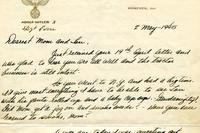
From the front page of Military.com:
COLUMBUS, Miss. -- It's an old adage that the Guard and Reserve are the red-headed step children of "Big Army." It's the guys on active duty that get the newest, shiniest, priciest piece of gear while the part-timers get the cast offs -- last year's equipment on its last legs.
Well, that's about to change in a few weeks when the Army National Guard receives its first of 200 UH-72A Lakota helicopters to replace its inventory of Vietnam-era UH-1 Huey and OH-58 Kiowa utility helos and some UH-60 Blackhawks.
Yes, the Big Army's already gotten about 20 of the new Lakotas to free up some of its Blackhawks for duty in Iraq, but the so-called "light utility helicopter" is purpose built for the Guard to use for domestic medivac situations and other state-assigned "general support" missions.
"For a lot of missions in the U.S. we don't need a Blackhawk," said Col. Neil Thurgood, director of the Army's utility helicopters project office, during a visit to the manufacturer's Columbus assembly plant May 9. "So, we're going to save the taxpayers some money."
Based on the Eurocopter EC-145 -- a commercial bantam-weight helo used commonly for hospital "life-flight" missions -- the UH-72 takes advantage of all the modern amenities typical of its class. With two engines, advanced rotors and a glass cockpit, pilots say the Lakota is easy -- and safer -- to fly than its predecessors, particularly the venerable Huey.
"I've been flying Hueys for years and you've got to be on the controls all the time," Thurgood said. But with the Lakota's advanced flight controls and auto pilot, "squeezing the stick the entire time" isn't in the cards anymore.
"I was coming into the airfield and all I had to do was turn some knobs and dials until I was in a hover, the auto pilot did it all," Thurgood added.
For Guard pilots who already have some stick time, it'll be an easy transition to the UH-72, Army officials here said. Pilots will have to attend a 10-day course on the Lakota at a Eurocopter facility in Grand Prairie, Texas, before they fly their home-station birds, and maintainers will have to do roughly the same thing to get up to speed on the LUH's modern systems.
New Guard pilots will simply leave initial flight training and attend the same 10-day course as their more experienced brethren.
"The transition won't be a problem at all," said Lt. Col. Jim Brashear, LUH product manager.
But a helicopter that program officials claim is one of the few Army aviation contracts that's adhering to projected cost and schedule timelines does have some limitations. For one, the LUH isn't built for a combat environment, so Guard units who deploy to a war zone won't get to take their shiny new helos with them.
"They'll still be able to fly their Blackhawks when they deploy," said Keith Roberson, deputy director of the Army's utility helicopters project office.
While officials here cite the LUH as an example of what can go right with an aviation program, the helo has seen its share of controversy. In July 2006, after the Army awarded the $3 billion contract to American Eurocopter -- a subsidiary of European Aeronautic Defence and Space Company -- competitor McDonnell Douglas Helicopters protested the decision, throwing the program's future into doubt.
The UH-72 emerged from the fight unscathed, but critics later charged the aircraft was ill suited to some environments, including so-called "high-hot" conditions like mountaintop wildfires and the deserts of California.
"There are no areas in the United States that we think we can't take this aircraft," Roberson countered.
The Lakota is being manufactured partly in Germany; with final assembly here at this newly-built plant in rural Mississippi. Through the rest of this year, more of the aircraft will be assembled at the Columbus plant, with the entire end-to-end production of Lakotas coming from domestic manufacturers by mid-2009, officials say.
The Lakota's foreign designers "are fulfilling their promise to shift production from Germany to the U.S.," Thurgood said. "That's contributing to our industrial base and our economy."
-- Christian








